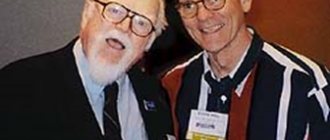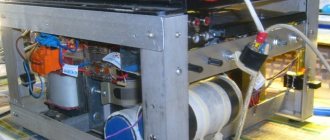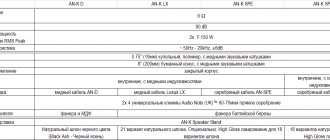Vibration damping vs vibration isolation
So what is the difference between the concept of “vibration damping” and “vibration isolation” and does it exist? - Jake Porrazzo, Application Engineer at TMC, answers this question. To familiarize yourself with the material, you can read the article or watch the demonstration video below.
“We often get questions about the difference between vibration damping and vibration isolation. Sometimes people use these terms interchangeably, but they are different, says Jake Porrazzo (TMC)."
Using the CleanBench™ TMC laboratory bench for optical microscopes, TMC demonstrates the difference between damping and isolation.
What is vibration damping?
Damping
(forced suppression of disturbance vibrations) is how well the tabletop prevents the spread of disturbances entering the table surface.
“In this case we use our CleanBench countertop. It and our optical tables use patented broadband damping technology. These tabletops are designed in such a way as to dissipate vibrations between its parts.
For example, if you had a mechanism or device mounted on the top of a table that created its own vibration, such as a motor or generator, and a highly damped top of the table top would do a good job of preventing that vibration from reaching other parts of the table, then this damping," says Jake Porrazzo (TMC)"
Jake Porazzo demonstrates the damping effect by tapping both an undamped steel top and a heavily damped CleanBench top. During this experiment, it is clear that the CleanBench top does a much better job of converting vibration energy into entropy before it reaches the ping pong ball. CleanTop's special design is designed to dissipate this type of interference.
Theory and mechanisms of damping in structural mechanics
If you hit a glass or metal bowl, it will emit a ringing sound that fades over time. In a world without damping, this ringing would continue forever. In reality, through several physical processes, the kinetic energy and (potential) elastic energy of the bowl are converted into other forms of energy. In this article, we will discuss how to describe damping in models and what physical phenomena cause damping in vibrating mechanical systems.
How is damping described mathematically?
There are several mathematical approaches to describing and accounting for damping. Let's briefly summarize the most popular ones.
The most noticeable manifestation of damping is the decrease (attenuation) of the amplitude of free vibrations over time, as, for example, in the case of a “singing” bowl. The rate at which the amplitude decays depends on how much damping is in the system. Typically, the amplitude of the oscillations decays exponentially with time. In this case, the energy loss over a period is proportional to the amplitude of the oscillations (over this period).
Classic "singing" bowl. Image courtesy of Sneharamm0han - own creation. Available under CC BY-SA 4.0 license at .
Let's start with the equation of motion for a one-degree-of-freedom system with viscous friction in the absence of external loads.
m \ddot u + c \dot u + ku = 0
Dividing by the mass m, we obtain a normalized equation, which is usually written as
\ddot u + 2 \zeta \omega_0 \dot u + \omega_o^2 u = 0
Here \omega_0 is the natural frequency of undamped oscillations, and \zeta is the relative damping ratio.
For the motion to be periodic, the relative damping coefficient must remain in the range 0 \le \zeta < 1. The amplitude of free oscillations in this system will fall in proportion to the factor
e^{-\zeta \omega_0 t} = e^{\frac{-2 \pi \zeta t }{T_0}}
where T0 is the period of oscillation without damping.
Damping of free vibrations with three different relative damping ratios.
In this context, there is another frequently used criterion - the logarithmic decrement δ. This is the logarithm of the ratio of amplitudes in two consecutive periods:
\delta = \mathrm {ln} \left ( \dfrac{u(t_i)} {u(t_\{i+1} )} \right ) = \mathrm {ln} \left ( \dfrac{u(t_i) }
{u(t_i+T)} \right )
where T is the period.
The relationship between logarithmic decrement and relative damping ratio is as follows:
\delta = \dfrac{2 \pi \zeta}{\sqrt{1-\zeta^2}} \approx 2 \pi \zeta
Another case where the damping effect plays a key role is the excitation of harmonic vibrations in a structure at a frequency close to the natural frequency of the system. At precise resonance, the oscillation amplitude will tend to infinity until damping is taken into account. The actual amplitude at resonance is actually determined by the amount of such damping.
Frequency (resonant) response of a system with one degree of freedom at different relative damping ratios.
In systems such as resonators, we want to achieve as much gain as possible. Related to this is another criterion that describes damping - quality factor (Q-factor). Quality factor can be defined as the gain at resonance. It is related to the relative damping coefficient:
Q = \dfrac{1}{2 \zeta \sqrt{1-\zeta^2}} \approx \dfrac{1} {2 \zeta}
Another formalism for the mathematical description of damping is based on the assumption that there is some kind of phase shift between the applied force and the resulting displacement, or, in other words, between stress and strain. Discussion of such phase shifts is appropriate only in the case of steady-state harmonic oscillations. If you plot the stress versus strain for a full period, you will see an ellipse - a hysteresis loop.
Loading curve.
In this version, it is possible to represent the properties of a material as complex-valued quantities. For uniaxial linear elastic deformation, the complex relationship between stress and strain can be written as
\tilde \sigma = \tilde E \tilde \varepsilon = (E^\prime+iE^{\prime \prime}) \tilde \varepsilon
The real part of the Young's modulus in this relation is called the storage modulus, and the imaginary part is called the loss modulus. The loss modulus is usually described through the hysteresis loss factor (loss factor) η, namely:
\tilde E = E(1+i \eta)
In this expression, E coincides with the storage modulus E'. You can also find another definition in which E denotes the relationship between the stress amplitude and the strain amplitude, that is
E = |\tilde E| = \sqrt{(E^\prime)^2+(E^{\prime \prime})^2}
In this case
\tilde E = \dfrac{E(1+i \eta)}{\sqrt{1+\eta^2}}
This difference is important only for large values of the hysteresis loss coefficient. An equivalent metric is the loss tangent, namely
\mathrm {tan} \, \delta = \dfrac{E^{\prime \prime}}{E^\prime} = \eta
The loss angle δ determines the phase shift between stress and strain.
Damping, specified through the hysteresis loss coefficient, is somewhat different from the case of viscous damping. Hysteresis losses are proportional to the amplitude of the displacements, and viscous damping is proportional to the speed. Thus, these quantities cannot be unambiguously related to each other.
The figure below compares the response of a single degree of freedom system using two different damping models. It can be seen that the viscous damping model predicts stronger damping at frequencies above resonant compared to the model through the hysteresis loss coefficient and weaker damping at frequencies below resonant.
Comparison of the dynamic response for the viscous damping model (solid lines) and for the model through the hysteresis loss coefficient (dashed lines).
Typically, at the resonant frequency, the following relationship between the specified criteria is satisfied: \eta \approx 2 \zeta. But this relationship holds only at one frequency. The figure below shows a system with two degrees of freedom. The values of the coefficients were selected for the first resonance, and it is clearly visible that the curves for the second resonance diverge quite seriously.
Comparison of the dynamic response for the viscous damping model (solid lines) and for the model through the hysteresis loss coefficient (dashed lines) in a system with two degrees of freedom.
The concept of hysteresis loss factor can be generalized by defining it in terms of energy. It can be shown that in the material model described above, the energy dissipated in one period is
D = \pi E^{\prime \prime} \varepsilon_a^2
where \varepsilon_a is the deformation amplitude.
Similarly, the maximum energy of elastic deformation per period is equal to
W_s = \dfrac{1} {2} E^{\prime} \varepsilon_a^2
The hysteresis loss coefficient can then be written in terms of energy quantities:
\eta = \dfrac{E^{\prime \prime}}{E^\prime} = \dfrac{D} {2 \pi W_s}
This definition in terms of dissipated energy can be used even if the hysteresis loop does not look like a perfect ellipse; it is enough just to be able to determine these two energy quantities.
Damping sources
There are a huge variety of physical damping mechanisms. In all natural processes, energy is dissipated in one way or another.
Internal losses in the material
In all real materials, energy is dissipated during deformation. This can be considered a type of internal friction. Note that the loading curve for a full period does not fit on a perfectly straight line. It looks more like an elongated ellipse.
Usually, to describe damping in a material, a model is used in terms of the hysteresis loss coefficient, since experimentally it turns out that energy losses over a period weakly depend on frequency and amplitude. In this case, the mathematical description in the loss coefficient model is based on complex values, that is, it implies only the case of harmonic oscillations. Therefore, this damping model can only be used for frequency domain studies.
Material hysteresis loss coefficients can vary greatly depending on the exact composition of the material and the data sources you use. The table below shows some rough estimates.
| Material | Hysteresis loss coefficient η |
| Aluminum | 0.0001–0.02 |
| Concrete | 0.02–0.05 |
| Copper | 0.001–0.05 |
| Glass | 0.0001–0.005 |
| Rubber | 0.05–2 |
| Steel | 0.0001–0.01 |
Loss factors and similar damping models are used when the physical damping mechanisms in the material are unknown or unimportant in the context of the problem under consideration. In some material models, such as viscoelastic materials, energy dissipation is inherently built into the mathematical model.
Friction in joints
Structures are often connected by bolts or other types of fasteners. If the connected surfaces move relative to each other during vibration, energy is dissipated through friction. If the magnitude of the friction force does not change over a period, the energy loss over the period depends weakly on frequency. In this sense, friction is similar to internal losses in a material.
Bolted connections are widely used in structural mechanics problems. The amount of energy dissipated in bolted connections can be highly dependent on the design. If it is important to reduce losses, the bolts must fit tightly together and be well tightened to reduce macroscopic slippage between surfaces.
Sound emission
The vibrating surface will set the surrounding air (or other medium) in motion and emit sound (acoustic) waves. These waves carry away some of the energy, causing the structure to lose energy.
Sound emission from a Tonpilz type transducer.
Anchor losses
Often a small component is attached to a large structure (base/substrate) that is not included in the analysis model. When a part vibrates, elastic waves appear in the supporting structure, which are also a source of energy dissipation. In the context of microelectromechanical systems (MEMS), this effect is called anchor losses.
Thermoelastic damping
Even if no energy is dissipated during perfectly elastic deformation, deformation of the material slightly changes its temperature. Local stretching leads to a decrease in temperature, and compression leads to heating.
This is a fundamentally reversible process, so that when the voltage is removed, the temperature will return to its original value. However, there are often non-zero gradients in the voltage field, which correspond to temperature distribution gradients. They cause heat flows from warm to cold areas. When the stress is “removed” during the loading cycle, the temperature distribution is already different from what it was during the load. Therefore, a local return to the original state is impossible. This results in energy dissipation.
Thermoelastic damping is important when studying high-frequency vibrations on small scales. For example, it can significantly reduce the quality factor of microelectromechanical resonators.
Dampers and dampers
Sometimes the design includes specialized dedicated vibration dampers, for example, springs in the wheel suspension.
Springs. Image by Avsar Aras, own creation. Available under CC BY-SA 3.0 license at .
Naturally, such components greatly influence the total damping, at least for some modes of vibration.
Seismic absorbers
Particular attention is paid to artificial vibration damping during construction in earthquake-prone areas. It is extremely important to reduce the amplitude of vibrations in buildings during an earthquake. In this case, absorbers can both isolate the building from the foundation and dissipate energy.
Seismic dampers in a public building. Image courtesy of Shustov - own creation. Available under CC BY-SA 3.0 license at .
Continuation
In Part 2 of this series, you can find information on how to define damping in COMSOL Multiphysics®.
What is vibration isolation?
Vibration isolation
- This is the separation of the upper part from the vibration of the floor. This is achieved (on CleanTop) through the use of proprietary Micro-g TMC pneumatic isolating feet.
To clearly explain the effect of isolation, a TMC specialist hits the platform on which the CleanTop stands to show with an accelerometer how the isolation supports reduce the transmission of floor vibration to the countertop surface in proportion to their transfer function.
At the first impact, the supports float in compressed air, as during normal operation. For the second strike, Jake Porazzo turned off the compressed air supply to prevent the supports from floating in the air and acting as rigid insulators. The accelerometer graph shows that rigid isolators have little effect on the propagation of floor vibration to the tabletop, while Micro-g legs provide excellent isolation from floor vibration.
Pneumatic isolators are commonly called "passive" vibration isolators because they do not pick up floor vibration. Active isolators, such as TMC's STACIS product, are equipped with sensors to detect and respond to floor vibration.
*When preparing this article, materials from the demonstration video of the TMS company were used >>>
Go to the TMC vibration suppression equipment catalog >>>
Full control.
Contents of the material
- Full control.
- Chapter 1. Traction
- Chapter 2. Taxiing
- Chapter 3. Suspension
- Chapter 4. Fear
- Chapter 5. Concentration
- Chapter 6. Right Attitude
- Chapter 7. Vision
- Chapter 8. Trajectory
- Chapter 9. Gas
- Chapter 10. Shifting gears
- Chapter 11. Brakes
- Chapter 12. Body position
- Chapter 13. Turning at Low Speed
- Chapter 14. Riding with a passenger
- Chapter 15. Setting up suspensions
- Chapter 16. Ergonomics
- Chapter 17. Aerodynamics
- Chapter 18: Chassis Setup
- Chapter 19. Fitness
- Chapter 20. Equipment
- Chapter 21. Track training
- All pages
Page 1 of 22
Effective Street Driving Techniques
LEE PARKS "FULL CONTROL"
PREFACE
It so happened that most of the forty years of my life were connected with motorcycles. Since childhood, I dreamed of riding a bike, and I sat on the saddle when I turned eleven. Since then, my hobby has captivated me more and more, I even wrote a book, “The Complete Idiot’s Guide to Motorcycles.” And recently I realized one interesting thing - I almost don’t know how to drive a motorcycle. Quite a strange discovery for a person with my experience, isn’t it?
For a long time I was into motorcycle touring, I was one of those guys who ride 1000 miles a day. My ultimate dream was to win the Iron Butt Rally. The sportiest bike I owned was the Honda ST 1000. A few years ago, everything changed overnight when I joined the Speedvision channel (now called the Speed Channel). From that moment on, the world of motorcycle racing ceased to be something that Cycle World wrote about months late in the back pages. Cable TV brought the racing straight to my living room, live.
But Speedvision was only the first step down a slippery slope. After a while I started hanging out with bad guys. Not with those who wheelie around the streets in strange clothes at hundreds of miles per hour, but with real athletes who have racing licenses and compete in national championships. With a few exceptions, they were all sensible people who had mastered racing skills to perfection. To become a full member of the group, I had to greatly raise my own level.
There is nothing unusual in my story. Every year more and more motorcyclists try to reach new heights. Unfortunately, in most cases, their efforts come down to buying the latest model of sports motorcycle. For some reason they believe that the key to success lies in technology. And so they rush to the store to buy exactly the same motorcycle as the winner of Sunday's race. Then they put pendants on it from companies whose names are written with umlauts. Then they tune the engine, although the factory power is too much for them. Of course, good technique allows you to achieve more, but only if the rider has the necessary skills. Tuning without skills is money down the drain.
I was lucky - I couldn't afford expensive bells and whistles, so I had to focus on skills. I put my pride aside and started asking questions to the guys in the group, not worrying about how stupid I looked in their eyes. I eagerly absorbed their advice, and then got on my motorcycle and trained for hours.
After some time, I began to look for a racing school to train with an instructor. Everyone recommended Advanced Riding Clinic to me. Having contacted this school, I was surprised to find that the cadets were being trained by my old friend Lee Parks.
It should be noted that by that time I was working as an editor at the publishing house Motorbook International. My responsibilities included searching for topics for future books and finding authors to write them. And then such luck - Lee teaches at a racing school, Lee is an experienced and talented author, therefore, he simply has to write a book. Which is what he did. True, due to Lee’s busy schedule and his inherent meticulous attention to detail, the work took a lot of time, but the result exceeded my wildest expectations.
Within these pages you will find the key to the treasures of Lee's many years of experience. With this book you can become faster and drive safer. When I first saw Colin Edwards or Nicky Hayden run the course, I decided that they were doing something impossible, inaccessible to us mere mortals. This book will show you how to do the same. Of course, after reading it, you will not instantly turn into Valentino Rossi, but you will be able to master his techniques. Lee Parks breaks down each technique into a sequence of simple steps and explains how to perform them. At one time I was amazed
how much this approach raised my own level. And although my bike (Yamaha YZF600R) cannot be called the best sportbike of our day, I am increasingly ahead on the track of those who used to show me the rear tire. I hope this book helps you as much as it helped me.
Take care, Darwin Holmstrom
ACKNOWLEDGMENTS
At first, I decided that I could handle writing the book in no time. I will simply outline in writing the course of my school, Advanced Riding Clinic (ARC), which I know like the back of my hand. How wrong I was! Fortunately, fate gave me great friends and an amazing family; without their support, the book simply would not have happened.
First of all, I want to thank my editor, Darwin Hallstrom. Not only did he give me the idea for this book, but he kicked me every day until I completed it. Without him, the book would have remained a dream.
I would like to thank Paul Teed, founder of Race Tech, who allowed me to use his articles for the suspension chapters. I could never write like that.
I want to thank everyone who shared their time, abilities and knowledge with me. This is science editor Ray Engelhardt, who managed to explain physical laws to me without involving abstruse formulas. I still wonder how he managed it. These are ARC instructors Tracy Martin and Ed Perlsell, who not only filled in for me at school while I wrote the book, but also served as models for many of the photographs. Kent Larson, NESBA, helped me with Chapter 21 on Track Training. Tom Riles taught me how to take photographs. Terry
McGarry, L.T. Schneider, D. C. Wilson, Ken Marena, Jason Elzordia, Peter Tavernis, Priscilla Wong, Debbie Webber, Amy Holland, Kevin Cameron, Kevin Wing, Andy Goldfine, Mansoor Shafi, Denis Sullivan, Randy Hatch, Kent Soigner, Michael Martinucci, Kim Andersen - all helped to me on many occasions. And special thanks to the guys from Avon who provided the photos.
Thanks to my parents who gave me the opportunity to engage in motorsports. My father taught me to ride a bike and encouraged my hobby in every possible way. He also got me my first job, where I learned how to write, edit and layout articles, and taught me my first photography lessons. Mom spent a bunch of weekends taking me and my friends to the motocross track. Then she patiently read novels while our engines roared nearby and kicked up clouds of dust. She also taught me how to teach.
My students' contributions to this book cannot be overstated. They learned from me, and I learned from them, honing my skills during classes.
Although most of the ideas in this book are the result of my personal experience, they are all based on methods developed long before my time. In February 1676, Sir Isaac Newton wrote to his colleague Robert Hook: “I can see further because I stand on the shoulders of giants.” I want to thank my giants - Keith Code, David Huff and Freddie Spencer. In many cases I quote them verbatim, but anyone who has read their work will easily recognize their influence on every word in this book. It is difficult to overestimate their influence on me and my methods.
Finally, I would like to express my gratitude to Landmark Education (www.landmarkeducation.com) and Curriculum for Living. My career would not have happened without them.
I have a terrible memory, so I apologize in advance to anyone I forgot to mention. All my life people have helped me and one page of text simply cannot accommodate everyone. This book can be dedicated to the generosity of people. Thank you everybody.
INTRODUCTION
The speed and capabilities of modern motorcycles have increased greatly in recent years. A stock sportbike is almost no different from its racing brother. Modern technology places very stringent demands on the driver, which means that driving training must reach a higher level.
Why is it difficult to learn to drive fast?
I spent a lot of time in motorcycle schools both as an instructor and as a student. I am absolutely convinced of the benefits of such schools. The knowledge I learned from motorcycle school saved my life several times. For a person who wants to learn how to corner quickly, there are two options. He can enroll in the Motorcycle Safety Foundation Experienced Rider Course or apply to one of the racing schools. Each option has its pros and cons.
The problem with MSF ERC is that training is carried out at low speeds. The courses are very helpful and I highly recommend everyone take them, but they will not teach you how to deal with speed anxiety. Racing schools, on the contrary, offer to perform exercises at too high speeds, unusual for the average motorcyclist. Therefore, during training, cadets are simply afraid to learn new techniques. A racing school is ideal for those who want to improve their existing high-speed driving skills.
I was an editor at Motorcycle Consumer News from 1995-2000, so I was fortunate to work with David Huff and Keith Code on many riding articles. They piqued my interest in the topic and I realized that I still had a lot to learn. Despite the fact that I took second place in the AMA championship in 1994 in the GP125 class, I drove on a whim, I lacked knowledge. I was fast, but unstable. If I found myself on an unfamiliar track and didn't get into it right away, I couldn't even realize my mistakes, let alone correct them. My long association with Huff and Code helped me understand the theory of driving, the physics of the process, so to speak, and I learned to recognize my problems and find ways to solve them.
A new way of learning
Many MCN readers have complained that there is too much of a gap between the MSF ERC and the racing schools. They would like to find something in between; many did not even want to go to the track, despite the propaganda,
which I unfolded on the pages of the magazine. All they needed was “a little cooler than the MSF ERC.” In addition, many readers have noted with regret that all books on motorcycle riding are written by racers for racers, and are too difficult for ordinary motorcyclists. They want simple solutions, not sophisticated racing strategies.
After listening to all this, I decided to open a new type of racing school. The idea was to combine the techniques of racing schools with the relaxed atmosphere of an empty parking lot where MSF ERC classes take place. In addition, I planned to break each technique into several simple actions, learn them separately and only then combine them.
Using my friends as guinea pigs, I created a training program and developed exercises. The basis of the training was a simple idea. There is no need to force a person to learn techniques all at once at high speeds, say 20 miles per hour faster than he is used to driving. It's better to ask him to go 2 miles per hour faster, then he won't get scared.
For example, a racer can spin a 4-foot circle at 32 mph. The average driver can do the same thing at 17 mph. If a person feels comfortable, he is happy to learn something new. So to start, I ask the cadets to do the drill at 0 mph. One of them sits on the motorcycle, the others tilt the motorcycle to the desired angle. Meanwhile, I point out to the cadet his mistakes and form the correct landing. We repeat this exercise several times until the cadet begins to do everything correctly on the spot. Then he goes around the circle and circles it at 17 miles per hour, trying to do it right. Then he increases the speed to 19 miles per hour, then to 21. Let's say at 21 miles per hour he starts having problems. I come to the rescue and make sure that he calmly passes the circle at this speed. After that it accelerates to 23 and so on. He may not be able to do this drill at 32 miles per hour, but by the end of the training he will certainly improve his skills greatly. This technique formed the basis of the Advanced Riding Clinic.
The effectiveness of this approach has been proven on hundreds of cadets. Even though it was designed for casual motorcyclists, even some professional riders have found it useful.
I actually stumbled upon this method when I was in college. There was a huge parking lot next to our dorm that was only used during sports events. One day, when there were no competitions, I rented the whole thing, threw a couple of old T-shirts on the asphalt and began to practice hanging. I didn’t arrange a complex trajectory for myself with a lot of turns and braking, because I intuitively believed that the simpler the better. And so, dressed in full protection, I went out onto the “track”.
I spent five minutes moving the bike from right to left and back again to warm up the tires (like the real racers I saw on TV), then began to increase the speed little by little. I found that I had to change my body position to cope with the increased speed. I didn't have an instructor to tell me if I was doing everything right, but still, gradually increasing my speed, I finally touched my knee to the ground. I felt like I had started a new life.
Instead of training further, I parked the bike, collected my jerseys and returned to the room. I felt like a new person. Every motorcyclist remembers the day he first touched the ground with his knee in a turn like it was yesterday. As a rule, he achieves this after many months of training. I achieved this in thirty minutes in an empty parking lot, feeling completely comfortable. You can do the same. In addition, you have this book, which can replace the instructor who was absent from me at that time.
Creating a book
I traveled around the country with the school's program and discovered two things. Firstly, all my cadets made great progress in their classes. Secondly, I covered a negligible portion of motorcyclists.
Knowing that, despite my best efforts, I could not teach everyone, I stopped advertising the school.
But is it possible to hide something in the Internet era? Happy school graduates posted their messages on all possible motor resources. Darwin Holmstrom, editor of Motorbook International, noticed them and asked me to write a book on the school's curriculum. I thought about it myself, but Darwin's suggestion made the idea a project. In the end, the book is the only way to convey the school program to all motorcyclists, so I sat down at the computer.
To retest my ideas and methods, I decided to return to professional racing. Out of a huge selection of competitions, I chose the WERA National Endurance Series because multi-hour races provide more testing opportunities. I joined the Speed Werks/Cyberlogtech team racing the Suzuki SV650. The team's other two drivers have just received their super licenses after a year of racing in the rookie class. I didn't want to fight for the championship, I just wanted to try my training program again.
To our surprise, the rookie team won the championship. Obviously, the training program was quite suitable for publication.
Our team owner, Scott Gowland, was killed two weeks before winning the championship. His contribution to success can hardly be overestimated. This book is dedicated to the memory of this remarkable man.
What is this book about?
The purpose of the book is to teach you complete control over the bike. As California Superbike School senior instructor Coby Fair aptly puts it, “total control” means making the bike be in the right place at the right time. You will determine the purpose of such control yourself - whether to drive more safely at your usual speed, or to increase the speed at the same level of safety.
This book reveals the secrets of motorcycle control; there is not a word about racing strategies. Not only will it help you improve your skill level, but it will also teach you how to recognize weaknesses in your skills. There are no general tips like “be smooth” or “be fast.” Keith Code once called such advice "clueless" because it doesn't explain how to achieve it. By doing the exercises in this book over and over again, sooner or later you will begin to perform them correctly, that is, smoothly and quickly.
How to use the book
The book is divided into six parts, you need to read them in order (I don’t like postmodernism, you know). The first part is devoted to the physics of the chassis. I had to try to explain all this without involving mathematical apparatus. Understanding physical principles is essential to conscious training, so I highly recommend not skipping this chapter.
The second part describes the psychological aspects of driving. Knowing how your brain perceives reality is very important; without it, you simply won’t be able to drive effectively.
The third part explains as clearly and in detail how to master the necessary skills. The illustrations show not only the correct execution of a particular technique, but also possible errors. In classes at ARC, I also demonstrate not only correct, but also incorrect execution of techniques. I've also included training outlines in the chapter so you can follow the exact same course as in ARC.
A standard site measures approximately 70 by 100 meters. The coating must be smooth, dry, free from dust and puddles of oil. This can be found in a large parking lot. The diagrams show the route markings and diagrams of gas and brake use. Don't forget before your workout
warm up the tires to operating temperature, shift the motorcycle from side to side. Believe me, your time on this will not be wasted.
It is very useful to train with a friend. It's best if he reads the book first too, but if not, just show him the workout diagram and pictures of correct and incorrect exercises. A comrade should evaluate your actions, because from the outside you always know better. I also recommend recording your workout on video. Trust my experience, this greatly speeds up the development of techniques.
Part 4 covers the intricacies of tuning your bike for high-performance riding. Each chapter is useful, but Chapter 15, which covers suspension adjustments, should be read before you begin training.
The fifth part is devoted to preparing the rider for high-performance driving. The gear chapter is based on hundreds of studies conducted during my time at Motorcycle Consumer News, as well as my 20 years of racing experience.
The Right Attitude
The techniques and methods outlined in this book have proven their effectiveness in practice. But other points of view on driving a motorcycle also have a right to exist. For example, Larry Pegram, whom I mercilessly criticize in some chapters, is a much faster racer than I am. My point is that the more techniques you try, the sooner you will find the one that suits you best.
I encourage you to try on techniques the same way you try on jackets in a store. You don't have to buy a jacket you try on, but the more jackets you try on, the sooner you'll find one that fits just right. The right approach to training is not to master everything, but to master the techniques you need today. I assure you, it is simply impossible to master everything at once. Later, when you want more, you can return to the book and level up.
This book is like a cookbook. Take it off the shelf when you need the next recipe. Fold the pages, leave notes in the margins, because the more useful the book, the more shabby it looks. Get another copy for your motorcycle friends and put it on the coffee table.
And don't forget, training should be fun. My mantra is: “Life is better with a motorcycle.” Robert Pirsig, in his wonderful book Zen and the Art of Motorcycle Maintenance, said it even better: “The only motorcycle you should be working on is you.” Practice techniques not only to drive faster and safer, but also to make your life more fulfilling and creative. Feel free to tailor the recommendations to suit yourself, because even the simplest steps performed by a talented dancer bear the imprint of his personality. The more fully you express yourself, the happier your life, so practice to make your life better.
- > >>











